Magazine
All But Lost: In Bengal, ISIS Ideology Allowed To Thrive And Prosper At Public Expense
Jaideep Mazumdar
Feb 06, 2017, 06:43 PM | Updated 06:43 PM IST
Save & read from anywhere!
Bookmark stories for easy access on any device or the Swarajya app.
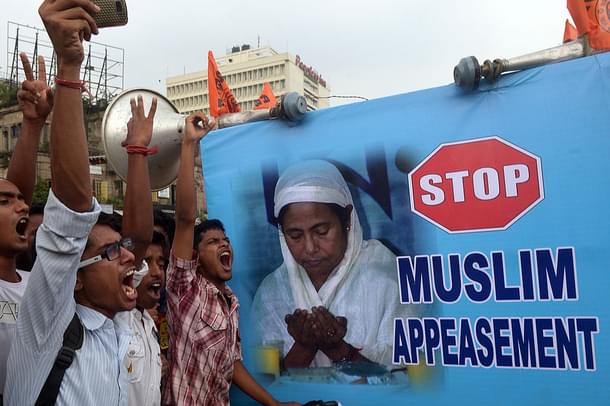

Salafist mullahs issue fatwas against Indian Prime Minister Narendra Modi and other BJP leaders. A prominent cleric opines that all women, irrespective of their religion, should cover themselves. Schoolchildren are taught to hail their parents as “abbu” and “ammi”, while school textbooks are revised to delete all non-Islamic terms.
The killing of Osama bin Laden is publicly mourned and a price is put on the head of writer Taslima Nasreen and others who are pronounced by regressive clerics to be anti-Islam.
Bigoted mullahs publicly call for the assassination of Bangladesh Prime Minister Sheikh Hasina Wajed for her crackdown on Islamists in her country. Authorities deny permission to Hindus to celebrate their religious festivals due to objections from Muslims. Houses and shops of Hindus are looted and torched, but the perpetrators are never booked.
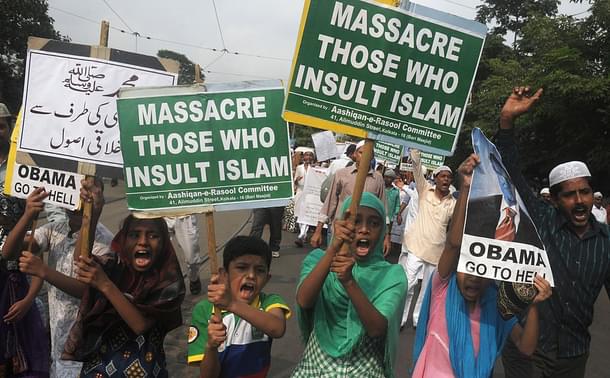
One would have expected this from some medieval corner of Pakistan that’s under the reign of the Taliban or the Daesh. But no, this is West Bengal under the chief ministership of Mamata Banerjee who often dons the hijab and bends over backwards to please venom-spewing Salafi mullahs. In the six years she has been in power in Bengal, the state has come under the firm grip of Islamists who have started dictating the agenda in many fields. Thus, the word “ramdhanu” (rainbow) gets changed to “rongdhanu” in school textbooks since the original name (of the rainbow) starts with “Ram”. Schoolchildren are taught to call their paternal uncles “chacha”, not the Bengali “kaku”, and their paternal aunts “fufi-amma” instead of the Bengali “pishi”. The Islamisation of school textbooks in Bengal is firmly on its way as dictated by hardline Islamists.
The Politics Behind It
The reason for Bengal slipping into the grip of hardline Islamists is political. Since the late 1950s, Muslims have, more or less, voted en bloc for any party that promised them security and privileges. The Congress, which ruled the state till the late 1970s, not only wooed them, but also looked the other way when illegal Muslim migrants from neighbouring Bangladesh started flooding the border districts of Bengal. Congress politicians offered them political patronage, protection and citizenship in return for their votes. The Left, which ruled (or misruled) Bengal for 34 years from 1977, actively continued with this policy to hold on to power. Mamata Banerjee has now perfected this policy because she has come to realise that without the Muslim vote, she would not be able to hold on to power in the state. It is the Muslims, who voted almost en masse for Mamata in the 2011 and 2016 Assembly polls, who are responsible for her impressive victories.
Mamata believes that in order to keep her crucial Muslim electorate happy, she has to humour the hardline mullahs who exercise near-total control over the mostly poor and illiterate Muslims in Bengal. That assessment is true. Over the decades, maulanas belonging to the Deobandi school of Islam have taught and preached the orthodox and bigoted version of Islam in madrassas and mosques in Bengal. Slowly, the syncretic and tolerant Sufi Islam that Bengali Muslims used to adhere to gave way to puritanical Islam. The Tablighi Jamaat, an offshoot of the revivalist Deobandi movement (which started as a result of the failed bid in 1857 to drive the British out of India and re-establish Mughal rule in this country), complemented the efforts of the hardline maulanas (all of them Urdu-speaking and hailing from Uttar Pradesh and Bihar) by preaching the puritanical form of Islam to Muslims in Bengal.
What also played a major role in radicalisation of the Muslims in Bengal was the huge inflow of money from the Gulf states (which follow the totally intolerant and regressive Salafi version of Islam) to fund mosques and madrassas. The Deobandi maulanas very soon metamorphosed into Salafis and started preaching hate and intolerance to the Muslim masses. The spread of Salafi Islam, which is very political in nature, soon resulted in political awakening among the Muslims who realised the need to vote en masse for any politician or party that would safeguard their interests. This “safeguarding” meant allowing illegal Muslim migrants from Bangladesh to settle down in Bengal (on mostly government land), providing them with the requisite citizenship documents and turning a blind eye to their misdeeds and criminal activities.
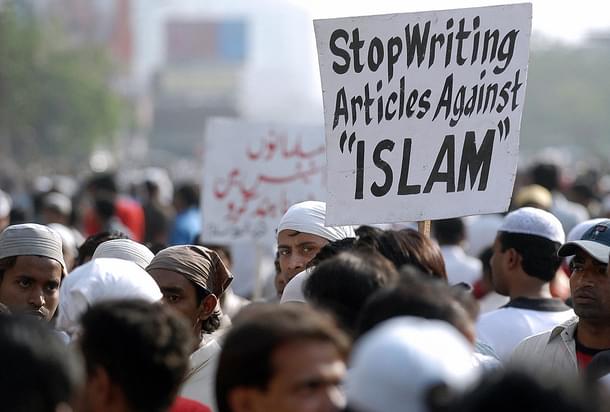
The Demographic Change
Just before the partition of Bengal in 1947 (when East Bengal became East Pakistan), Muslims constituted around 30 per cent of the population of this part of Bengal (West Bengal). Immediately after Partition, with many Muslims migrating to East Pakistan (and some even to West Pakistan), the Muslims were reduced to about 19.4 per cent of West Bengal’s population. But since the late 1950s and early 1960s, with unchecked flow of illegal Muslim migrants from Bangladesh into Bengal, their numbers have been steadily rising.
The 2011 census revealed that Muslims form 27.5 per cent of the population of Bengal, and according to unofficial estimates, they are about 29 per cent now. Thus, the percentage of Muslims in Bengal is back to the pre-Partition levels. Had this not been so demographically alarming, it could have been construed as a total negation of Jinnah’s two-nation theory: Muslims for whom he created (East and West) Pakistan have been migrating back to India within a few years of Pakistan’s formation.
It is not only the large-scale illegal influx of Bangladeshi Muslims into Bengal that has led to this demographic change. Muslims have a much higher birth rate than other communities. And also, migration of Muslims from Uttar Pradesh and Bihar in search of livelihood has contributed to this growth. The decadal growth of the Muslim population has been much higher than the Hindus.
Two large swathes of Bengal—North and South Dinajpur, the Malda-Murshidabad-Birbhum belt, and the North and South 24 Parganas-Kolkata-Haora belt—have seen an exponential growth in Muslim population and many areas in these two belts have become Muslim-majority areas.
Political Assertion By Muslims
With the rise in numbers, the Muslims’ sense of entitlement to political power has also increased. As has already happened in neighbouring Assam where a Muslim party—the All India United Democratic Front (AIUDF) led by ultra-orthodox business magnate Badruddin Ajmal—now represents the Muslims of that state, in Bengal, too, the Muslims have started asserting themselves politically. But while clean-shaven Muslim politicians are elected, the actual power behind them are the hardline and intolerant Salafist mullahs with their hennaed hair and beards, kohl-lined eyes, turbaned heads (a la Osama bin Laden), long kurtas and short pyjamas.
It is their writ that runs among the largely illiterate and radicalised Muslims in Bengal. Mamata knows this only too well and thus woos them with freebies and other material and political enticements to keep them happy. They, in turn, deliver their captive Muslim votes to Mamata, thus ensuring the victory of her party in the polls, and her indebtedness to them only increases with each passing poll in the state.
These hardline mullahs have grown assertive and very influential in the years since Mamata came to power in the state. The Shahi Imam of Kolkata’s Tipu Sultan Masjid (so named since it was constructed in 1832 by Tipu Sultan’s youngest son Ghulam Mohammed), Nuroor Rehman Barkati, typifies this powerful breed of mullahs and maulanas in Bengal. A couple of weeks ago, Barkati offered Rs 25 lakh to anyone who would cut off Prime Minister Narendra Modi’s beard, shave his head and smear him with black ink. This he did while addressing a press meet with Trinamool MP Idris Ali by his side.
A few weeks before that, Barkati issued a fatwa against Bengal BJP president Dilip Ghosh, asking him to leave Bengal and offering Rs 5 lakh to anyone who would beat up Ghosh and “kick him out” of the state, once again with Idris Ali sitting beside him. Barkati had, in May 2011, held funeral prayers for Osama bin Laden, and in July 2015, for Mumbai blast accused Yakub Memon.
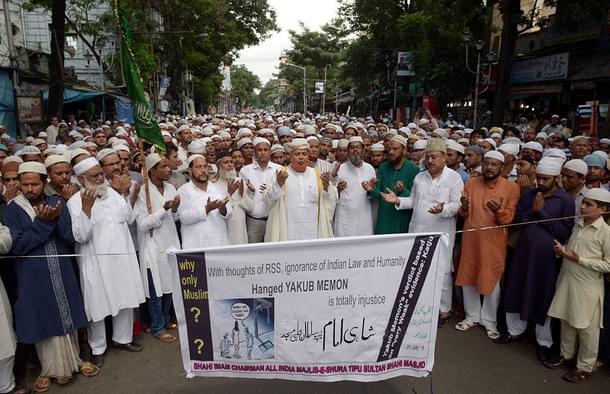
Barkati moves around in an expensive SUV fitted with a red beacon provided to him by a grateful Mamata Banerjee.
In April 2013, 16 Islamic organisations held a rally in the heart of Kolkata that was attended by tens of thousands of angry, skull-capped Muslim young men in kurtas and pyjamas in protest against the execution of war criminals in Bangladesh. Speaker after speaker at the rally condemned Sheikh Hasina and some even called on “faithful Muslims” to execute her. They extolled Jamaat-e-Islami Bangladesh vice-president Delawar Hossein Sayeedi, who was on trial then for collaborating with West Pakistani forces in the genocide against Bengalis. Many of the mullahs accused Hasina of being soft on Hindus and declared her apostate. The Trinamool, the Left parties or the Congress had no word of condemnation against the rally.
While Mamata allows such rallies to take place in Kolkata, she has been consistently denying permission to the BJP, RSS and other such organisations to hold rallies in Bengal. She has, in fact, adopted a virulent anti-BJP stance only to please Muslims.
Mamata’s blatant acts of appeasement of Muslims, like the monthly stipends of Rs 2,500 and Rs 1,000 respectively to imams and muezzins of about 55,000 masjids in the state, promises to build houses at state expense for them and other such acts have only acted to encourage the Muslims to demand far more than their share of funds and projects. The Mamata government is accused of funneling most of the benefits of state and central government-sponsored schemes like bicycles and books for schoolchildren, agricultural subsidies, housing and crop loans, loans to micro, mini and small enterprises and grants under various projects to Muslims. It is estimated that more than 50 per cent of the total funds for development are spent on 29 per cent of the state’s population (that is, the Muslims).
In December, the state government forced organisers of a seminar on Balochistan that was to be held at Calcutta Club to cancel the event. The reason was twofold: one, hardline Salafi maulanas in Bengal didn’t like the idea of Pakistan’s perfidy in Balochistan being talked about, and two, Tarek Fatah, an ardent advocate of liberal, progressive Islam who has no love lost for hardline mullahs was to speak at the seminar. Major General (retired) G.D. Bakshi, who was also invited to speak at the seminar, expressed his disgust at the Mamata Banerjee government bending to the wishes of radical, anti-Indian and pro-Pakistani Islamists.
Muscle-Flexing By Mullahs
Such appeasement of Muslims by the state government has emboldened the hardline clerics to flex their muscles. Some maulanas in Muslim-dominated districts like Malda and Murshidabad have openly called for the execution of Narendra Modi, BJP president Amit Shah and others, and have called on Muslims to ensure the steady elimination of Hindus from their areas. Many maulanas have prohibited Muslim women from wearing orange sarees or clothes with even orange spots since orange (saffron, actually), they have held, is the sacred colour of Hindus. Such fatwas and directives have been winked at by an indulgent Mamata, thus emboldening the mad mullahs more. The result: the revision and Islamisation of school textbooks as dictated by the mullahs.
Not only Muslim clerics, even large sections of the radicalised Muslim populace have felt encouraged to launch attacks on Hindus. Such attacks have been growing with alarming frequency over the last couple of years. Hindu homes and establishments have come under attack in Malda, Murshidabad, Birbhum, Haora, Hooghly, North 24 Parganas and some other districts of the state. Such attacks have been engineered in a very sinister manner: the spark for the simultaneous attacks launched on Hindus in at least 12 different places in the state after the Durga Pujas last year were false rumours spread by Muslim clerics that Hindus had attacked Muharram processions. Such attacks have also been provoked: in the latest instance at Ichhapur’s Garulia locality (16 kilometres north of Kolkata).
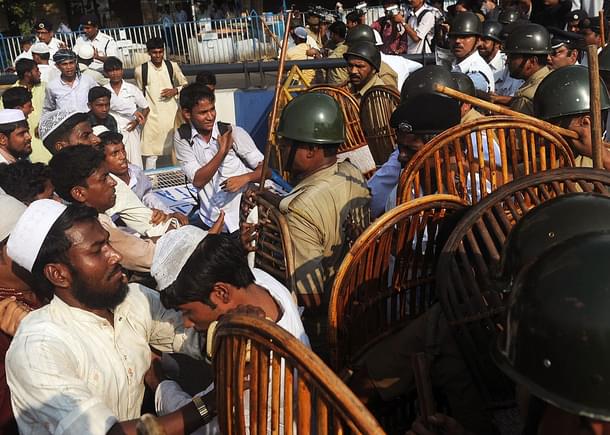
In the third week of January, a Muslim youth allegedly posted some derogatory comments about Hindu gods and goddesses on Facebook, took printouts of those and pasted them at some places in the locality. Angry Hindus thrashed the youth, and Muslims from neighbouring areas then launched coordinated attacks on Hindus at Garulia.
Administrative inaction, characterised by police looking the other way when Hindus are attacked and failure to take action against radical Muslim clerics who have been provoking members of their community to attack Hindus or even arresting the attackers has led to a sense of immunity among radical Islamists.
They know that the Mamata Banerjee government will do nothing against them for fear of losing their support, and the stronger that this feeling grows, the more brazen do the Deobandi-Salafi mullahs and the Muslims they have radicalised get. What has added to this sense of immunity among hardline Muslims is the state government’s blanket denial of Hindus coming under attack from Muslims in the state and trying to prevent the media from reporting them.
Leaders of Hindu Samhati, which has been monitoring and highlighting attacks on Hindus in the state over the past six years, say this is all part of a larger and very sinister long-term gameplan of hardline Islamists. “For the first couple of decades, they (Muslims) act as mute and submissive vote banks to political parties. Once the parties grow dependent on them and start appeasing them, the Muslims start asserting themselves. Simultaneously, Deobandi-Salafi clerics radicalise the Muslim populace and preach hatred and intolerance. Once the Muslim population in one area increases, attacks are launched on Hindus to create a sense of fear among them and drive them out of the area. Next comes total Muslim domination of the area. The long-term gameplan is to convert the entire belt from lower Assam, north Bengal, Murshidabad, Malda and Birbhum and adjoining areas of Bihar and Jharkhand into a totally Muslim-dominated area under the firm grip of Salafist mullahs and maulanas and their radical and orthodox followers that will ultimately pose a grave threat to India’s security,” says Hindu Samhati leader Dulal Bhattacharjee.
Many progressive Muslims from different walks of life are also equally concerned over the rise of fundamentalist Islamist forces in Bengal. “These mullahs are not only giving Islam a very bad name, but also snuffing out the liberal, tolerant and progressive Muslims,” says Shamsuluzzaman Mullick, a pediatrician. “Bigots and regressives like Barkati are harming the entire community. Liberal Muslims are feeling suffocated and we resent the domination of our community’s discourse by people like Barkati. They are not true Muslims and don’t understand Islam at all. Unfortunately, politicians legitimise these fundamentalist clerics by according them importance. This should stop and the liberal, progressive Muslims should be encouraged by politicians to represent the community. Only then can people like us take over the leadership of the community. This is critical in the interests of our nation.”
His apprehension cannot be dismissed offhand: within a few years at best, a large swathe of eastern India will be populated by first, second and third generation Bangladeshi migrants who have been radicalised by Salafi preachers and this whole belt will be under the firm control of the Salafis who would definitely make it the happy playground of Islamic terror groups. The threat of the Daesh entering India through Bengal, and not via Pakistan as is being feared, is real and imminent.
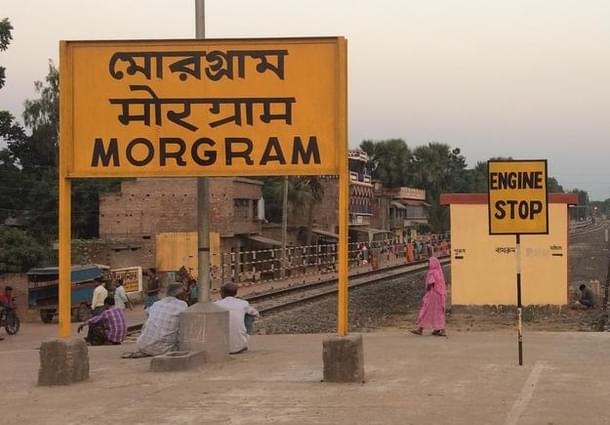
The Story Of Mayurgram/Morgram
Mayurgram was, till about two-and-half decades ago, a sleepy, idyllic village near Nalhati (about 240 kilometres north of Kolkata) in Bengal’s Birbhum district. Surrounded by lush paddy fields, it was home to some 280-odd Hindu families and just 15 Muslim families, all of whom were sharecroppers. It bordered Murshidabad district.
From the early 1990s, Bangladeshi Muslims started settling down in the village as guests of the 15 Muslim families. “The old Muslims of our village told us the new people were their relatives. They started setting up shacks on government land and grazing land. We complained, but leaders belonging to the CPI(M), which was in power then, did nothing. By about 1998, there were more than 50 Muslim households in our village. Some of them suddenly got money and started buying farmlands,” said Kabiraj Mukherjee, 67, a former resident of the village who now stays in Bolpur town.
“And then harassment by the Muslims started. Our womenfolk used to be teased and a few were also molested. We lodged police complaints, but to no avail. The Muslims started objecting to our pujas and rituals and the administration supported them. Two mosques came up, one just next to our Kali Mandir, and the administration stopped us from blowing conch shells or beating drums, saying it would disturb the peace and the Muslims were objecting. The Muslims, of course, were allowed their azaan and all their festivals. The Muslims started abusing and threatening us. From 2001, Hindus started selling off their farmlands and migrating to the nearby towns and to Kolkata. The Durga Puja in our village stopped,” said Mukherjee, who sold off his 10-bigha plot of farmland and two-storied house to a Muslim family and migrated to Bolpur eight years ago.
Today, Mayurgram does not exist; its name has been changed to Morgram and there are just 10 Hindu families left in the village. All of them are sharecroppers in farmlands owned by Muslims. “We just could not put up with daily threats and abuses by those belligerent Muslims, the harassment being faced by our wives and mothers and daughters, and other forms of mental torture. They used to slaughter cows during Eid just next to our Kali Mandir. They used to mock us. The police and politicians did nothing. Life became hell for us, and so we were forced to leave our ancestral village,” said Haripada Boral, 48, another resident of that village who now stays in Burdwan town.
It is not just Mayurgram (or Morgram) that has changed thus. Hundreds of villages across Bengal are witnessing this forced migration of Hindu families and their gradual takeover by Muslims.
All thanks to Mamata Banerjee.
Jaideep Mazumdar is an associate editor at Swarajya.





